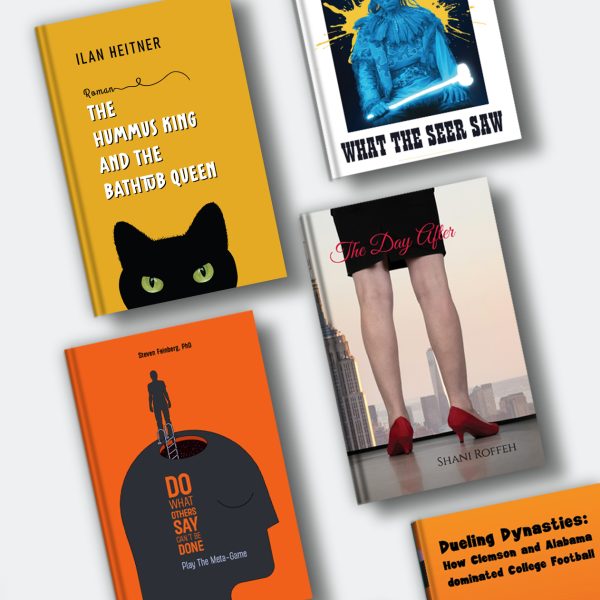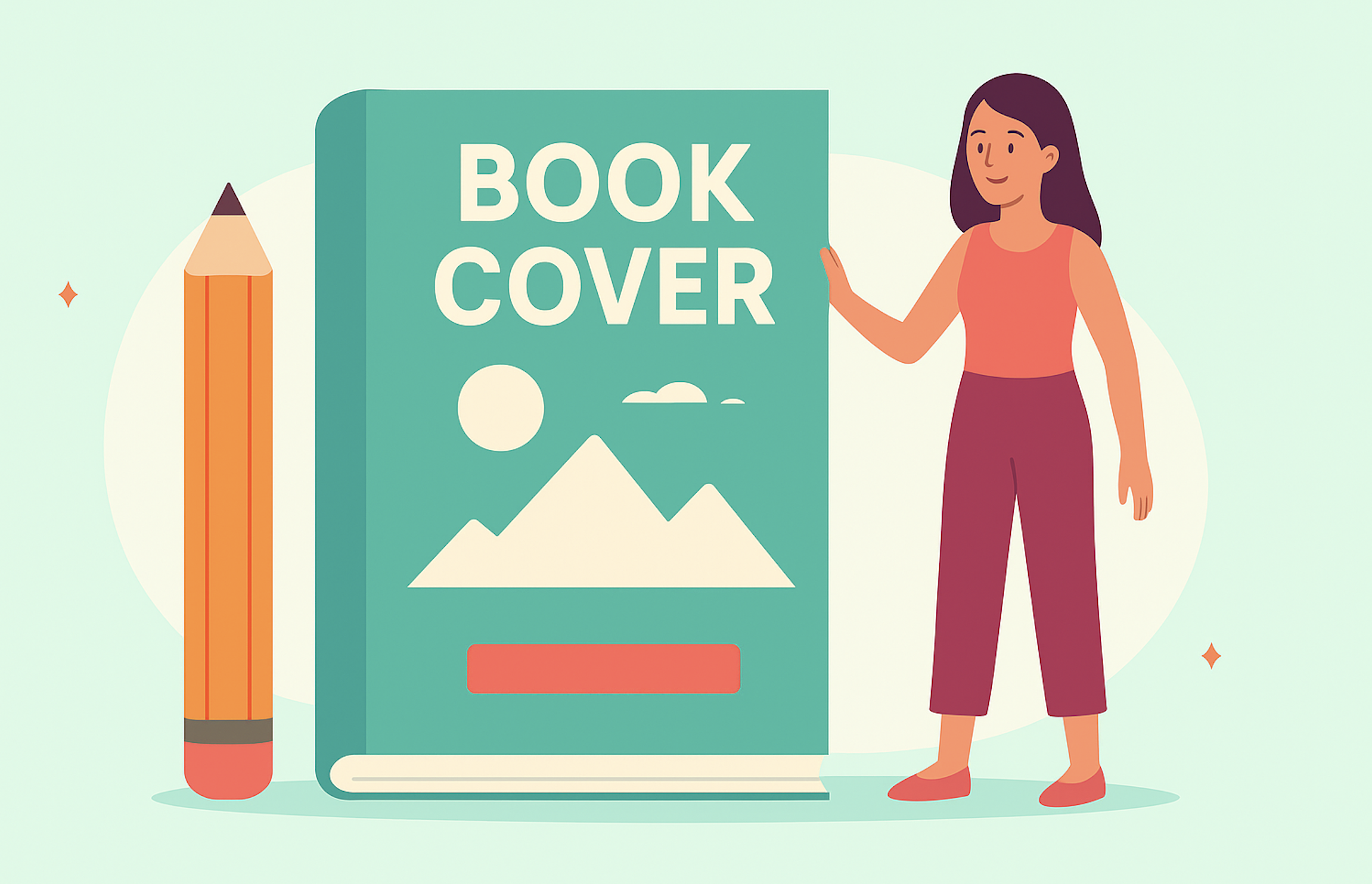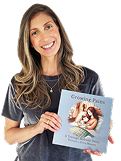Choosing the right book size might not be the first thing on your mind when you start writing, but trust us—it’s more important than you think. Think of it like picking the right pair of shoes for an event. Sure, you could wear flip-flops to a wedding, but it probably wouldn’t make the best impression. Similarly, picking the wrong book size can affect everything from printing costs to how readers perceive your book.
In this guide, we’ll walk you through the average book dimensions used across genres, provide a handy chart to make your decision easier, and even dive into why book specs (yes, we’re talking about trim size, paper, and binding) matter more than you’d expect. Let’s get measuring!
Standard Book Sizes: The Basics You Need to Know
So, you’re ready to publish your masterpiece, but first, let’s talk about sizes. Not the kind of sizes that matter when you’re shopping for jeans (although that’s important too). We’re talking about book sizes, the often-overlooked but crucial aspect of self-publishing. Getting the right size for your book ensures it looks professional and fits well on your reader’s shelf—literally and figuratively.
The most common sizes for paperback books fall into two categories:
- Trade paperback: The classic trade paperback is typically 6” x 9” and gives your book that sophisticated feel (without the high price tag).
- Mass-market paperback: These are smaller and more portable, usually measuring around 4.25” x 7”. There’s also the popular 5.5” x 8.5” size that works for many fiction books, offering a sweet spot for readability and production costs.
But let’s not forget that book printing plays a major role in this process. Beyond choosing the right size, how your book is printed—whether it’s digital or offset printing—can affect its quality, cost, and production time. Digital printing is more affordable for smaller runs and quick turnarounds, while offset printing is better suited for large-scale production, offering more precise color and finish options. The choice of paper stock, binding type (like perfect binding or hardcover), and the quality of the printing itself all contribute to your book’s overall appeal and durability.
The bottom line? The right size matters, but there’s no one-size-fits-all solution. It’s about balancing reader experience with the look you’re going for, while also considering how book printing impacts your final product’s quality and cost.
Book Sizes Chart
Here’s a quick reference chart to give you a clear picture of the most common book sizes:
| Size (Inches) | Size (Centimeters) | Common Use |
| 6″ x 9″ | 15.24 cm x 22.86 cm | Novels, Memoirs, Non-fiction |
| 5.5″ x 8.5″ | 13.97 cm x 21.59 cm | Literary Fiction, Trade Paperbacks |
| 8″ x 10″ | 20.32 cm x 25.4 cm | Coffee Table Books, Photo Books |
| 7″ x 10″ | 17.78 cm x 25.4 cm | Children’s Books, Educational Books |
| 4.25″ x 7″ | 10.8 cm x 17.78 cm | Mass-Market Paperbacks |
This chart should give you a solid idea of what each book size looks like and where they’re commonly used in the publishing world. Choosing the right size for your book is more than just a personal preference—it helps define the reading experience, production costs, and how your book will be received by your audience. Whether you’re designing a novel or a coffee table book, selecting the right dimensions is one of the first steps in ensuring your book’s success.
What Are the Book Sizes for KDP? Let’s Break It Down
If you’re planning to publish your book through Kindle Direct Publishing (KDP), choosing the right book size is crucial—not just for aesthetics but also for meeting KDP’s requirements and ensuring that your book looks professional when it hits the shelves (even if those shelves are virtual). But before you start measuring, let’s get a little more familiar with KDP’s print options and how to select the perfect size for your book.
KDP’s Print Options: What You Need to Know
KDP offers a variety of print options for both paperback and hardcover books, each with its own set of available sizes. Here’s a quick rundown of what you need to know:
- Paperback Books: For paperbacks, KDP provides several standard sizes, which range from the typical 6” x 9” (15.24 cm x 22.86 cm) to smaller options like 5” x 8” (12.7 cm x 20.32 cm). There’s also a 5.25” x 8” (13.34 cm x 20.32 cm) size if you’re looking for something a little more unique. These sizes are great for novels, memoirs, and non-fiction books.
- Hardcover Books: KDP has recently expanded their options to include hardcover books. The available sizes for hardcover books are slightly more limited, with the most common being 6” x 9” (15.24 cm x 22.86 cm). This is the same size as the paperback, but it offers a more premium look and feel for those who want to give their readers that hardcover experience.
KDP’s main goal is to give you flexibility, while also making sure your book will be printed correctly.
What Are Standard Book Dimensions for Different Genres?
Let’s dive into genres, because, let’s be honest, not all books are created equal—just like not all pizzas are the same size (though we wish they were!). Each genre often gravitates towards a specific book size, and choosing the right one can set the tone for your book’s content, much like selecting the perfect title to capture your reader’s attention. The right size not only impacts the overall feel of your book but also elevates the reading experience, balancing both practicality and aesthetics for your audience. Here’s a breakdown by genre:
Coffee Table Books: Make a Big Statement
Coffee table books are designed to impress visually. The ideal sizes are 8” x 10” (20.32 cm x 25.4 cm) or 12” x 12” (30.48 cm x 30.48 cm). These larger sizes give plenty of space for stunning images, making your book a statement piece. The big format makes it a perfect centerpiece for display. Choose a larger size to make sure your visuals stand out.
Children’s Books: Perfect for Little Hands
Children’s books need to be easy to hold. Common sizes are 7” x 10” (17.78 cm x 25.4 cm) or 8” x 8” (20.32 cm x 20.32 cm). These sizes are great for large children’s book style illustrations and simple text. A smaller size helps kids handle the book comfortably. These dimensions ensure a fun, engaging reading experience.
Fiction/Novels: The Classic Go-To Sizes
Fiction books usually come in 5.5” x 8.5” (13.97 cm x 21.59 cm) or 6” x 9” (15.24 cm x 22.86 cm). These sizes are comfortable for reading and cost-effective for printing. The 6” x 9” format is a popular choice for both fiction and non-fiction. It provides enough space for text without feeling too bulky. These sizes are widely accepted in the publishing world.
Textbooks and Educational Books: Structured for Learning
Textbooks often come in 8.5” x 11” (21.59 cm x 27.94 cm), a size that allows for clear, easy-to-read text and plenty of room for diagrams or illustrations. This larger format accommodates complex information in a readable, structured layout. The size is perfect for academic or reference books, where the content needs to be comprehensive yet accessible.
Poetry Books: Compact and Elegant
Poetry books are typically smaller in size, with 5” x 8” (12.7 cm x 20.32 cm) or 5.5” x 8.5” (13.97 cm x 21.59 cm) being common choices. These sizes allow for a delicate and intimate reading experience, enhancing the poetry’s feel. The compact size makes it easy for readers to hold and enjoy, while also offering a visually pleasing format for the poetic layout.
Book Specs: The Details That Matter
When we talk about book specs, we’re referring to the technical details that define how your book will look and feel once it’s printed. This includes elements like trim size, paper type, binding style, and even your book’s ISBN. Each of these factors contributes to the overall appearance, durability, and reading experience of your book. A properly chosen ISBN ties everything together, allowing your book to be recognized and cataloged in global databases, making it easier for readers and retailers to find.
- Trim Size: This is the final size of your book after it’s printed and trimmed. It determines the proportions and layout, affecting how your content is arranged on the page.
- Paper Type: The choice of paper affects the texture, weight, and quality of your book. Glossy paper is often used for books with high-quality images (like photo books), while matte or uncoated paper is commonly used for novels and textbooks.
- Binding Style: This refers to how the pages are held together. Common binding styles include perfect binding (used for most paperbacks) and hardcover binding, which adds durability and a premium feel.
How Book Specs Impact the Final Product
Your book specs are what transform your manuscript into a physical product, and they directly impact its quality, usability, and shelf appeal. For example, choosing a larger trim size for a novel can make it feel more professional and give it a premium look, while a smaller trim size might be more portable and affordable. The paper type will affect how colors appear in printed images or how readable the text is in a novel. Similarly, the binding style will determine the longevity of the book—hardcovers are more durable, while paperbacks are lighter and more cost-effective.
The Relationship Between Specs and Print-on-Demand Services
When using print-on-demand (POD) services, book specs play a significant role in both production and cost. POD services, like KDP, offer a range of specs for you to choose from. The size and binding options you select will directly influence your printing costs, as larger books and hardcover editions generally cost more to produce. Additionally, POD services often have specific guidelines for trim sizes, paper types, and binding styles, so it’s important to ensure your book specs match those requirements to avoid issues during the printing process.
Wrap-Up: Size Matters, But So Does the Perfect Fit
Choosing the right book size and understanding the specifications that come with it is key to bringing your vision to life. Whether you’re crafting a visual masterpiece with a coffee table book or creating a comfortable, engaging read for children, every genre has its ideal size. From trim size to paper type and binding style, every detail plays a role in shaping how your book looks, feels, and is experienced by readers.
By keeping these factors in mind, you can make sure your book is not only visually appealing but also aligns with your goals and audience. So, take your time, pick the perfect specs, and let your book shine!
The journey doesn’t stop here—once you’ve settled on the right size, it’s time to dive deeper into the self-publishing process. For a comprehensive roadmap to guide you through every step of publishing, check out our Ultimate Guide to Self-Publishing Success. This guide will provide you with all the insights and strategies you need to publish your book with confidence, covering everything from formatting to distribution and marketing. Happy publishing!
FAQs – Standard Book Sizes
Q1: What is the size of all books?
Books come in various sizes depending on the type and genre. There is no single “size” for all books, but some common standard sizes include 6″ x 9″ for novels, 5″ x 8″ for shorter books, and larger sizes like 8″ x 10″ for coffee table books. The size you choose for your book should depend on its content and intended audience, as each size serves a different purpose in publishing.
Q2: What size is a 6×9 book?
The 6″ x 9″ size is one of the most popular formats for novels, memoirs, and general non-fiction. It’s large enough to hold text comfortably without being overly bulky, making it a go-to for many authors. This size works well for paperbacks and hardcover books, offering a professional, readable experience for readers.
Q3: What size paper is 5.5 x 8.5?
The 5.5″ x 8.5″ size is a standard format commonly used for literary fiction and trade paperbacks. This size is slightly smaller than the typical 6″ x 9″, making it more portable and easier to handle for readers. It’s ideal for shorter works, as the slightly smaller dimensions keep the book light while still offering enough space for text and images.
Q4: Is 6×9 standard book dimensions?
Yes, 6″ x 9″ is considered a standard book size in the publishing world. It is commonly used for novels, memoirs, and academic books due to its balance between readability and compactness. This size is ideal for authors seeking a professional look and feel for their book without making it too heavy or difficult to handle.
Q5: What is the most popular children’s book size?
For children’s books, the most popular sizes are 7″ x 10″ and 8″ x 8″. These sizes allow for vibrant illustrations and simple text that young readers can follow along with. The 8″ x 8″ square format, in particular, is great for picture books, providing ample space for colorful images that are crucial to engaging young minds.
Q6: What size is a quarto page?
A quarto page refers to a book size that is typically 8.5″ x 11″ (21.59 cm x 27.94 cm). This size is often used for larger works, including academic books, reference materials, and some art books. Quarto pages allow for expansive layouts and are perfect for books that include detailed graphics, diagrams, or large illustrations.
Q7: What size is an A6 book?
A6 book dimensions measure 4.1″ x 5.8″ (10.5 cm x 14.8 cm), which is smaller than the typical paperback sizes. This compact size is often used for small works, such as pocket-sized novels, diaries, or travel guides. It is easy to carry around, making it perfect for readers who want a portable, convenient book to take on the go.







